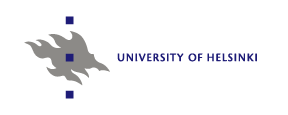- FIN-CLARIAH Research Infrastructure
A new national research infrastructure initiative FIN-CLARIAH for...
8.12.2021 8:12 by eahyvone - WarMemoirSampo published on December 3, 2021
A new “Sampo” application, “WarMemoirSampo”...
8.12.2021 8:04 by eahyvone - Five new SeCo papers accepted for the ISWC 2021
The 20th International Semantic Web Conference (ISWC 2021), the...
2.8.2021 6:53 by eahyvone
- Annastiina Ahola, Lilli Peura, Rafael Leal, Heikki Rantala and Eero Hyvönen: Using generative AI and LLMs to enrich art collection metadata for searching, browsing, and studying art history in Digital Humanities
- Eero Hyvönen, Petri Leskinen, Alexandre Lionnet, Blandine Blukacz-Louisfert, Pierre-Etienne Bourneuf, Davide Rodogno, Grégoire Mallard, and Florian Cafiero: Linked Open Data Approach to Study the Assembly Minutes of International Organizations and Their Underlying Prosopography in the Real World Context
- Eero Hyvönen, Petri Leskinen, Alexandre Lionnet, Blandine Blukacz-Louisfert, Pierre-Etienne Bourneuf, Davide Rodogno, Grégoire Mallard, and Florian Cafiero: A Linked Open Data Infrastructure for Studying Historical Activities of International Organizations: First Results on the League of Nations (1920-1946)
- Petri Leskinen, Eero Hyvönen, Alexandre Lionnet, Blandine Blukacz-Louisfert, Pierre-Etienne Bourneuf, Davide Rodogno, Grégoire Mallard, and Florian Cafiero: A Linked Open Data Service and Semantic Portal to Study the Assembly Minutes and Prosopography of the League of Nations (1920–1946)
Semantic Mash-up Widgets
Semantic mash-up floatlets are components that can be easily plugged into any web page for injecting semantically relevant content from a semantic portal to the current page. Floatlets are a new way for utilizing and publishing content in semantic portals and for interlinking portals efficiently and semantically correctly.
For example, in the screenshot of a demo application the video archive YLE Elävä Arkisto has been semantically linked with the relevant content in MuseumFinland by the widget on the right bottom corner. In this case, the current web page is about the history of speed skating and the widget shows old skates from MuseumFinland. By clicking on the widget links, the skates can be examined in more detail in MuseumFinland.
Floatlets provide additional functionality or content to the web page by communicating with external semantic portals using the Web 2.0 AJAX technology. In the simplest form this means showing content from external semantic portal, but interaction can be more complicated. For example the widget can offer rich custom search or some other type of interaction user interface to the external semantic portal.
What makes widgets particularly interesting is that they can be plugged into any web page with a minimal amount of work and skills, by adding only a few HTML/Javascript-lines to the page.
Contact persons:
Prof. Eero Hyvönen
Aalto University
eero.hyvonen [at] aalto.fi



